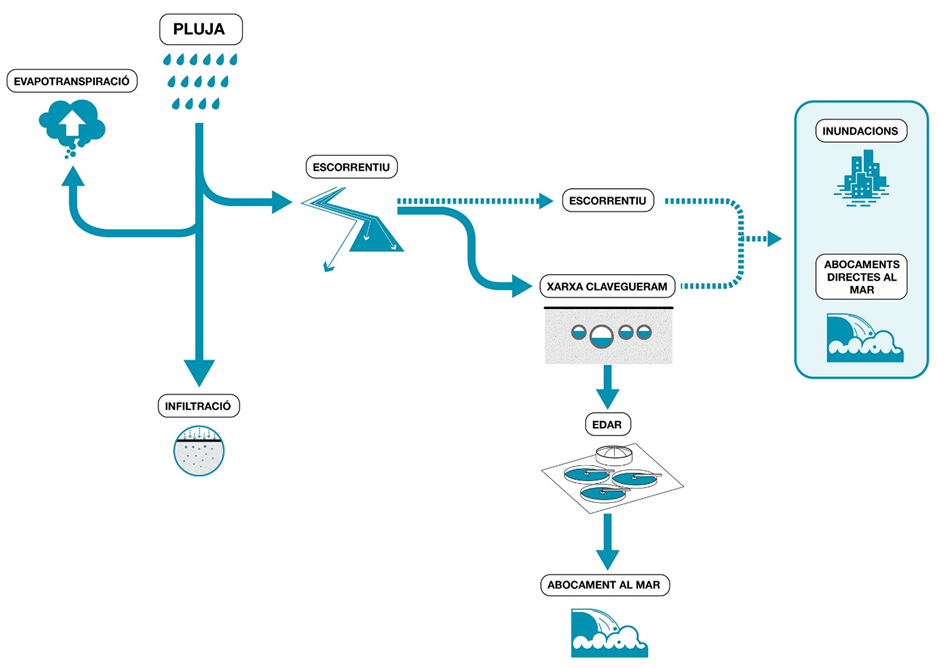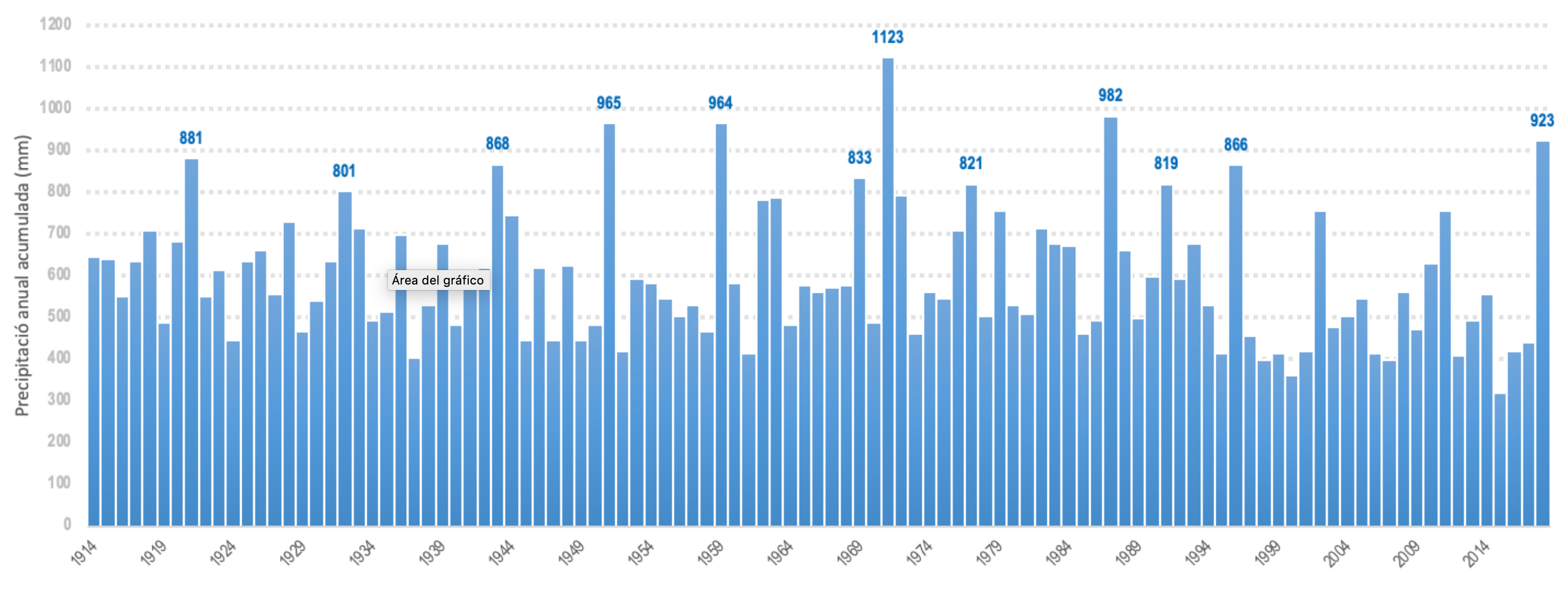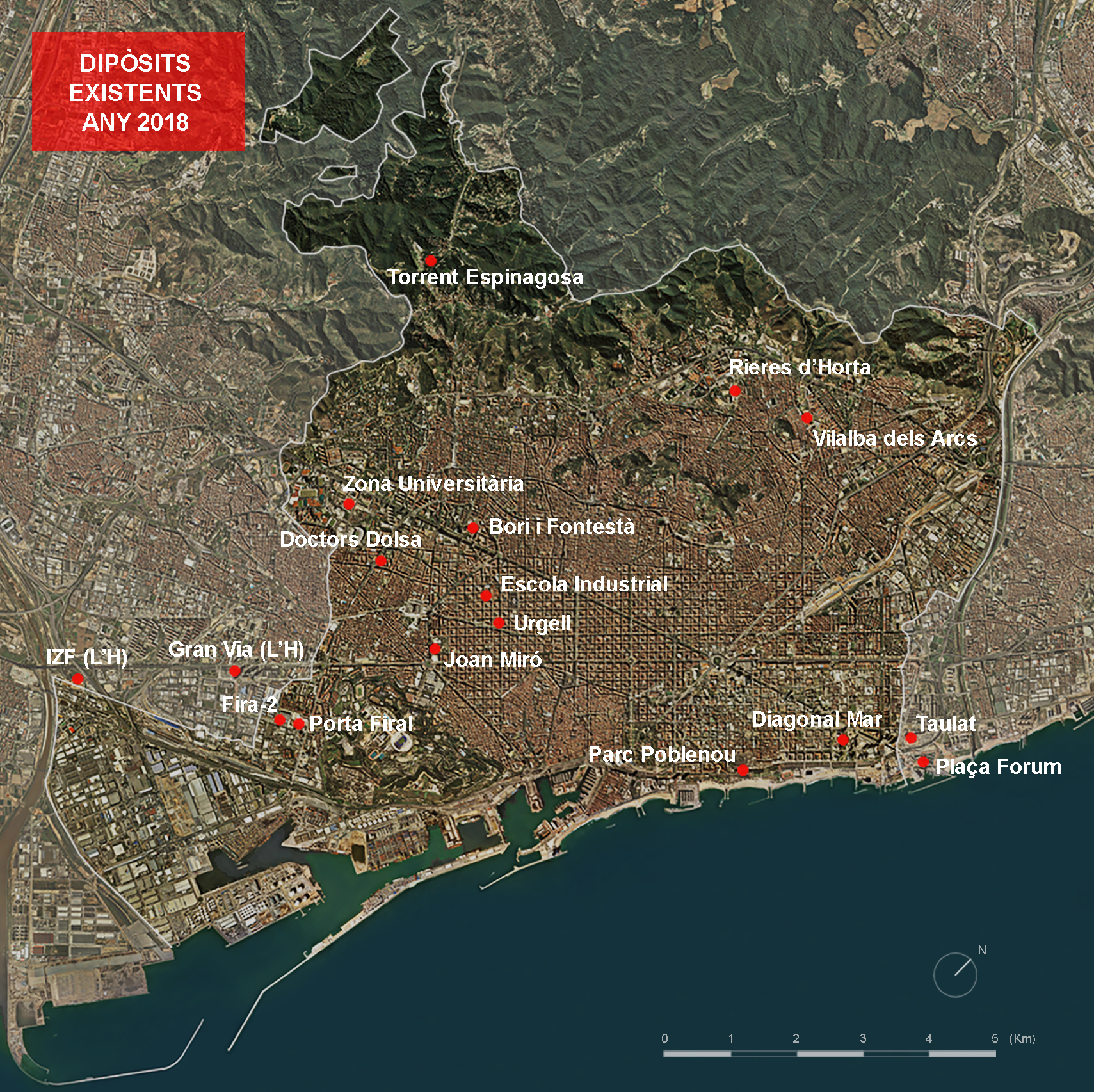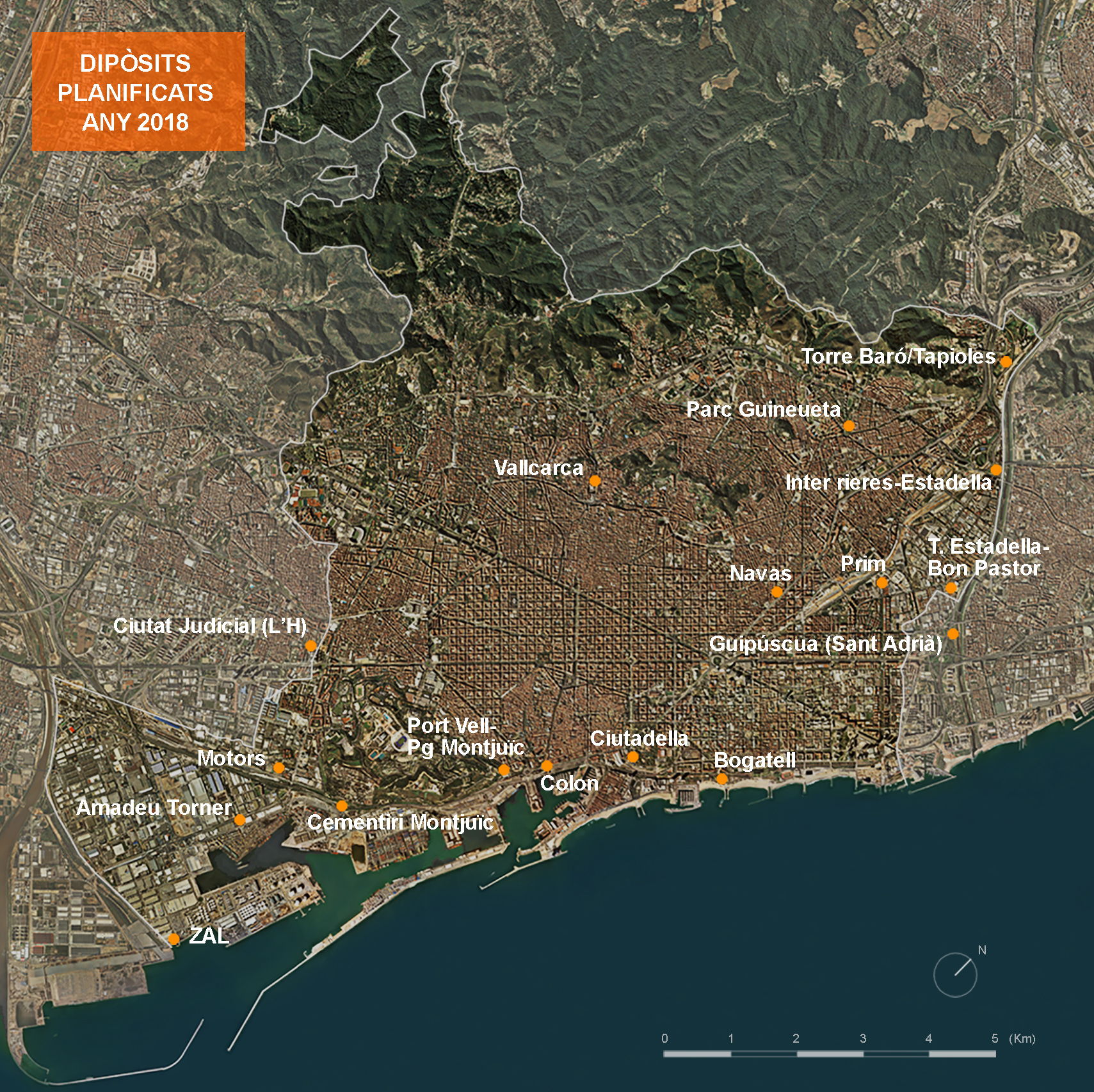In order to calculate the effects of climate change, the Intergovernmental Panel on Climate Change (IPCC) publishes assessment reports (AR) which are the benchmark for the state of scientific, technical and socio-economic knowledge on climate change, based on so-called emission scenarios. The climate projections in the Climate Plan are based on the latest published assessment report (AR5, 2014), specifically for the RPC4.5 scenario or committed scenario (reduction of GHG emissions in line with the Paris-COP24 agreement) and the RCP8.5 scenario, or passive scenario (no reduction of GHG emissions). When this flooding study was developed, however, the simulations of network operation in these scenarios were not yet available, and those of the previous report were used, where B1 is similar to the committed scenario and A2 similar to the passive scenario.
BCASA simulated the performance of the primary sewer system with its 2016 configuration, without including any of the actions planned for the medium/long term, considering the B1 and A2 climate change scenarios, and with the design rainfall associated with the 10-year return period estimated for 2040. In all simulations, a sea level rise of 0.94 metres over the current level was considered.
A simulation of the current sewer system for the two climate change scenarios has been carried out to estimate the effects that climate change may have on the city.
Performance of the sewer system in the medium-term committed scenario (2040)
A worsening of the performance of the sewer system is observed in the simulation of the medium-term committed scenario, with an increase of up to 12% in the sections with surface water flows (pink), up to 7% in the sections where the water flows 50 cm below ground level (brown) and up to 23% in the sections that operate under pressure (yellow). The remaining 58% of the network works correctly.
Source: Impact Study on Climate Change in Barcelona. Barcelona Regional based on modelling by BCASA.
Comparison of the current performance of the sewer system and in the medium-term committed scenario (2040)
The results obtained when comparing the operation of the drainage system today with the performance of the system in the committed scenario for rainfall with a return period of 10 years show the sections that would their status to operating under pressure at 0.5 metres below ground level, in blue, and those where overflows would occur, in red.
Source: Impact Study on Climate Change in Barcelona. Barcelona Regional.
Performance of the sewer system in the medium-term passive scenario (2040)
Simulating the current sewer system for an estimated 10-year return rainfall for 2040 with the climate change predictions for the passive scenario shows a worse functioning of the drainage system, with up to 13% of sections with overflows in the network (pink), up to 30% of sections under pressure (yellow) and 0.5 metres below ground level (red). In this scenario, 55% of the network works in free laminar flow (green).
Source: Impact Study on Climate Change in Barcelona. Barcelona Regional based on modelling by BCASA.
Comparison of the current performance of the sewer system and in the medium-term committed scenario (2040)
Although the differences between the committed scenario and the passive scenario are minimal, network performance becomes more critical in the passive scenario, as the number of sections that become pressurised, in blue, and the number of sections where water flows on the surface, in red, increases. The map shows how deficiencies in the drainage system are exacerbated by the effects of climate change in the areas of the centre of Poblenou, the Badal axis, Sant Antoni-Raval Sud, the Diagonal axis and Sant Andreu.
Source: Impact Study on Climate Change in Barcelona. Barcelona Regional.
Flood hazard level in future climate scenarios
Combining the results obtained from the simulation of the sewer system performance for the committed and passive scenarios with the surface water behaviour variables (slope and catchment surface area) of the hazard map provides the following maps showing the future flood hazard level in the medium term (2040).
Flood hazard level in the medium-term committed scenario (2040)
The map shows the areas of the city where the vulnerability of the system is most evident. The sections marked in red and orange represent the areas with the highest hazard level, highlighting the areas of Poblenou, the Diagonal axis, Sant Andreu, Badal and Sant Antoni, which is where the areas that will become critical in the future are concentrated.
Source: Impact Study on Climate Change in Barcelona. Barcelona Regional.
Comparison of the present flood hazard with the medium-term committed scenario (2040)
Comparing the results from the simulation of the hazard level for the committed scenario with the present flood hazard level in the sewer system shows the areas of the city where the flood hazard is increasing. The areas of the system with the most critical increases in flood hazard in the city are marked in red and orange.
Source: Impact Study on Climate Change in Barcelona. Barcelona Regional.
Flood hazard level in the medium-term passive scenario (2040)
Comparing the current hazard level with the hazard level resulting from the simulation of the passive scenario shows that the differences between the two future scenarios are minimal; however, in the passive scenario there is a sharper increase in the hazard level in Poblenou, Sant Andreu, Badal and the Diagonal axis. The map shows the areas in which the system his more vulnerable in red and orange, while the areas of the city where flooding is not expected to have an effect, basically associated with a steep slope of the terrain, are marked in blue and green.
Source: Impact Study on Climate Change in Barcelona. Barcelona Regional.
Comparison of the present flood hazard with the medium-term committed scenario (2040)
Comparing the results obtained from the simulation of the flood hazard level for the passive scenario with the present hazard level in the sewer system shows the areas of the city where the flood hazard is increasing. The areas of the city with the most critical hazard increase in the system for the passive scenario are marked in red and orange .
The flood hazard level for the passive scenario is slightly higher than in the committed scenario.
Source: Impact Study on Climate Change in Barcelona. Barcelona Regional.





